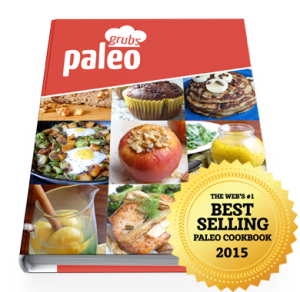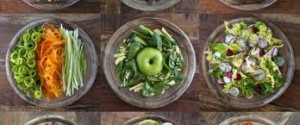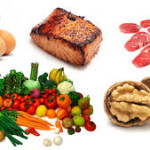The Paleo diet advocates eating foods that are as close to their natural state as possible. In fact, one of the expressions that aficionados use is, “If the caveman didn’t eat it, then you shouldn’t either!”
Granted cavemen in different areas of the world ate different types of meat, fruits, vegetables, nuts and seeds . . . but you get the picture.
Here are a few guidelines to get you started on a healthier way of eating:
 1. Get rid of the processed foods, potatoes, sugar and sugary snacks from your pantry. Most paleolithic eaters also don’t eat dairy products, including milk, cheese and yogurt. If you don’t have them in your home you are less likely to give in to temptation in a moment of weakness.
1. Get rid of the processed foods, potatoes, sugar and sugary snacks from your pantry. Most paleolithic eaters also don’t eat dairy products, including milk, cheese and yogurt. If you don’t have them in your home you are less likely to give in to temptation in a moment of weakness.
2. Meat in it’s most natural state, which means grass-fed, antibiotic and steroid free! Buying meat with these criteria can be a little difficult to find and definitely more expensive than the cuts of meat in the grocery store refrigerator. However, they are also healthier for your body and will taste better.
Other options include buying straight from a butcher and not from the large box grocery store. You might also find a couple of families who want to split a whole cow. Now you can buy the grass fed, antibiotic and steroid free animal you want, have it butchered and split it with two or three other families. You’ll have meat for your freezer to last several months and it will be more cost effective.
3. Vegetables and produce tastes better and is cheaper at the local farmer’s market. Of course that only works in the summer and fall. But, when you can buy organically grown produce in your area for half the year it can cut your budget and give your family fruits and vegetables that taste great and have a much lower pesticide and insecticide load.
Even better, if you have a plot of land you can grow your own vegetables, you can harvest lettuce, carrots, tomatoes, peppers and other vegetables all season long. You can even keep a small herb garden in your home to grow all year long if you have a window with direct sunlight!
4. Try to get your nuts and seeds in their raw state and roast them at home if you’d like with minimal salt. Legumes, including peanuts, are off the diet – so don’t include them.
Nuts and seeds are high in proteins and very healthy fats, which your brain needs for optimal functioning. Don’t scrimp on the nuts and seed but remember that while they are high in healthy fats they are also high in calories.
5. Drink plenty of water. While this guideline is not specifically Paleo, it is important to note that we are often dehydrated. If you are feeling thirsty then the likelihood is that you are already 1-3% dehydrated! Drink water to help your kidneys, to lose weight, to plump your skin cells and to just feel better!
Resources:
Chriskresser: 6 Tips for Successful Weight Loss on a Paleo Diet
http://chriskresser.com/6-tips-for-successful-weight-loss-on-a-paleo-diet
Brooklyn Paleo: 10 Tips for Going Paleo
http://brooklynpaleo.wordpress.com/going-paleo/10-tips-for-going-paleo/
Ultimate Paleo Guide: 56 Tips to Starting the Paleo Diet
http://ultimatepaleoguide.com/56-tips-starting-paleo-diet/
Paleo nonPaleo: 46 Paleo Tips Anyone Can do
http://paleononpaleo.com/paleo-tips-anyone/
CNN: Paleo Diet Ranks Last on ‘best diets’ list
http://www.cnn.com/2014/01/07/health/best-diets-ranked/
US NEws: How to follow the paleo diet on a budget
CrossFit: Paleo in Six Easy steps
http://www.crossfit816.com/6-easy-steps-to-paleo
| Advertisement | |
 |
|



Leave a Reply